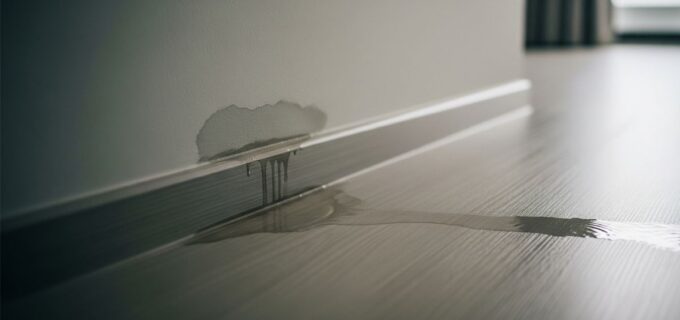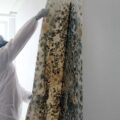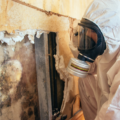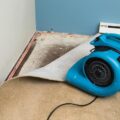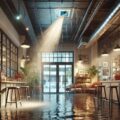In the nation where high-rise living and tropical humidity are the norm, homeowners face a persistent challenge: leaky pipes. The combination of Singapore’s climate and ageing infrastructure in many buildings creates an environment where pipe leaks are often insidious, causing damage before they’re even detected.
The impact of water damage extends beyond visible structural issues, seeping into the very air we breathe and the surfaces we touch daily. As such, it’s crucial for Singaporean homeowners to understand not only the prevalence of this problem but also the importance of addressing it promptly. By recognizing the signs early and taking swift action, residents can protect both their homes and their health from the hidden dangers that lurk behind walls and under floors.
In this guide, we’ll explore the health risks associated with water damage from leaky pipes and provide practical steps for minimising these risks in Singapore’s unique urban environment.
Understanding the Health Risks
Mould Growth
When water leaks from pipes and accumulates in hidden areas like behind walls, under floors, or in ceilings, it creates a damp environment that is ideal for mould growth. Mould spores thrive in such conditions and can quickly spread throughout the home, often going unnoticed until they become a significant problem. Exposure to mould can lead to a range of health issues, especially for individuals with allergies, asthma, or weakened immune systems. Symptoms can include coughing, wheezing, skin irritation, and in severe cases, respiratory infections. For families with young children, the elderly, or pets, the risks are even more pronounced, making it critical to address water damage as soon as it is detected.
Bacterial Contamination
Water leaks can lead to bacterial contamination, particularly if the water is left stagnant for extended periods. Bacteria, such as Legionella, thrive in warm, damp environments and can pose serious health risks if they become airborne and are inhaled. Contaminated water can also seep into other areas of the home, potentially contaminating drinking water or food preparation areas. This can lead to gastrointestinal issues, skin infections, and other illnesses. Preventing and addressing bacterial contamination requires swift action to clean and disinfect areas affected by water leaks.
Structural Damage
Prolonged exposure to water can weaken the structural integrity of your home. Wooden beams, floors, and walls can become waterlogged, leading to warping, cracking, and eventual collapse. This not only poses a significant safety hazard but also contributes to an environment where mould and bacteria can thrive. Additionally, structural damage can lead to the development of cracks in walls and foundations, which can allow more moisture to enter the home, exacerbating the problem. It’s essential to recognize the signs of structural damage early to prevent costly repairs and potential health risks.
Pests and Vermin
Damp areas created by water leaks are attractive to pests such as termites, cockroaches, and rodents. These pests are not only a nuisance but can also carry diseases and contribute to poor indoor air quality. Termites, for example, can cause extensive damage to wooden structures, while rodents can spread bacteria and viruses through their droppings. Cockroaches are known to trigger asthma and allergy symptoms in sensitive individuals. Preventing pest infestations by addressing water leaks promptly is crucial for maintaining a healthy living environment.
Immediate Actions to Take After Detecting a Leak
Turn Off Water Supply
The first step after detecting a leak is to turn off the water supply to the affected area or the entire home if necessary. This action will prevent further water from escaping the pipes and reduce the extent of the damage. Knowing where the main water shut-off valve is located is essential for every homeowner, as it allows for quick response in an emergency. Turning off the water supply can also help mitigate the risk of electrical hazards if water has come into contact with electrical wiring or appliances.
Remove Standing Water
Once the water supply is turned off, it’s crucial to remove any standing water as quickly as possible. Standing water can soak into floors, walls, and furniture, causing further damage and providing a breeding ground for mould and bacteria. Use towels, mops, or a wet/dry vacuum to remove the water. For larger volumes of water, you may need to rent or purchase a pump. It’s also important to dispose of any water-damaged items that cannot be adequately dried, such as carpets or upholstered furniture, to prevent mould growth.
Dry the Area
After removing the standing water, the next step is to dry the affected area thoroughly. This can be done using fans, dehumidifiers, and by opening windows to promote air circulation. In humid climates like Singapore, using a dehumidifier is particularly effective in reducing moisture levels and preventing mould growth. Pay special attention to hidden areas like under floorboards, behind walls, and inside cabinets, where moisture can linger and cause long-term damage. The faster the area is dried, the lower the risk of mould and bacterial growth.
Inspect for Damage
Once the area is dry, it’s important to inspect for any signs of damage that may require further attention. Look for discoloration, warping, or soft spots in walls, floors, and ceilings, which could indicate water damage. Check for any signs of mould, such as a musty odour or visible growth. If you suspect that the damage is extensive or beyond your ability to repair, it’s advisable to contact a professional for a thorough assessment. Early detection and repair can prevent more serious issues from developing.
Preventive Measures to Avoid Health Risks
Regular Inspections
To avoid the health risks associated with water damage, it’s essential to conduct regular inspections of your home’s plumbing system. Look for signs of leaks, such as water stains on ceilings or walls, dripping sounds, or unexplained increases in your water bill. Inspect areas prone to leaks, such as under sinks, around toilets, and near appliances like washing machines and dishwashers. Regularly checking these areas can help you catch small leaks before they turn into larger problems that can cause significant damage and health risks.
Proper Ventilation
Proper ventilation is key to preventing moisture buildup in your home, which can lead to mould growth and other issues. Ensure that areas like bathrooms, kitchens, and laundry rooms are well-ventilated, either through exhaust fans or by opening windows. In humid climates, it’s also a good idea to use dehumidifiers to control indoor humidity levels. Maintaining proper ventilation helps to reduce the likelihood of mould and bacteria thriving in your home, thereby minimising health risks.
Prompt Repairs
When leaks are detected, it’s crucial to address them immediately. Delaying repairs can lead to more extensive damage and increase the risk of mould, bacteria, and structural issues. If you’re not comfortable making repairs yourself, it’s important to hire a qualified plumber to fix the problem. In some cases, repairing a leak may require more than just patching a pipe; it may involve replacing damaged sections of wall, flooring, or ceiling to ensure that no moisture remains trapped inside.
Waterproofing Solutions
Waterproofing vulnerable areas of your home can provide an additional layer of protection against leaks and water damage. Consider waterproofing basements, bathrooms, and other areas where water is likely to accumulate. This can involve applying waterproof coatings to walls and floors, installing moisture barriers, or using sealants around windows and doors. These measures can help prevent water from entering your home and causing damage, thereby reducing the risk of health problems associated with mould and bacteria.
When to Call in Professionals
Mould Remediation Experts
If you discover mould growth in your home, it’s important to consider the extent of the problem before attempting to address it yourself. For small areas of mould, you may be able to clean it up with household products like bleach or vinegar. However, for larger infestations or if the mould has spread to hidden areas like inside walls or under flooring, it’s best to call in mould remediation experts. These professionals have the tools and expertise to safely remove mould and prevent it from returning, ensuring that your home remains a healthy environment.
Plumbers and Contractors
In cases of significant water damage, it’s often necessary to hire professional plumbers and contractors to assess and repair the damage. Plumbers can fix the source of the leak, while contractors can address any structural damage that has occurred. This may involve replacing water-damaged materials, reinforcing weakened structures, and ensuring that the affected area is properly dried and ventilated. Hiring professionals ensures that the repairs are done correctly and reduces the risk of future issues.
Health and Safety Assessments
After repairing water damage, it’s a good idea to conduct a health and safety assessment of your home. This can involve checking for any remaining signs of mould or bacteria, testing indoor air quality, and ensuring that the repairs have fully addressed the problem. In some cases, you may want to hire a professional to conduct this assessment, particularly if the water damage was extensive. Regular health and safety assessments can help you maintain a healthy home environment and prevent future issues.
Tips for Maintaining a Healthy Home Environment
Regular Cleaning
Maintaining a clean home is essential for preventing the buildup of moisture, dust, and other factors that can contribute to poor indoor air quality. Regularly clean areas that are prone to moisture, such as bathrooms and kitchens, using disinfectants to kill bacteria and mould spores. It’s also important to clean and inspect your home’s air ducts, as these can harbour mould and distribute it throughout your home. Keeping your home clean and dry is one of the best ways to minimise health risks associated with water damage.
Using Dehumidifiers
In a humid climate like Singapore’s, using dehumidifiers can be an effective way to control indoor humidity levels and prevent mould growth. Place dehumidifiers in areas prone to moisture, such as basements, bathrooms, and laundry rooms, to keep humidity levels in check. Be sure to empty and clean the dehumidifier’s water collection tray regularly to prevent mould growth inside the unit. By maintaining optimal humidity levels, you can reduce the risk of mould and bacteria thriving in your home.
Monitoring Indoor Air Quality
Investing in an indoor air quality monitor can help you keep track of any potential issues caused by water damage. These devices can detect levels of humidity, mould spores, and other pollutants in the air, allowing you to take action before they become a serious problem. Regularly monitoring indoor air quality can help you maintain a healthy living environment, particularly after repairing water damage or addressing mould issues. If the monitor indicates poor air quality, consider using air purifiers or improving ventilation to resolve the issue.
Leaky Pipes in Singapore: Health Risks, Prevention & Home Safety
In this blog, we’ve explored the common causes of pipe leaks, the potential health hazards they create, and effective strategies to minimise these risks. From regular maintenance and prompt repairs to proper ventilation and moisture control, homeowners have several tools at their disposal to protect their living spaces and health.
Remember, prevention is always better than cure. Be vigilant for signs of water damage, such as discoloration on walls or ceilings, musty odours, or unexplained increases in water bills. If you suspect a leak or notice any signs of mould growth, don’t hesitate to act. Prompt action can prevent minor issues from escalating into major health concerns.
We encourage all Singapore residents to take a proactive approach to home maintenance and health protection. Regularly inspect your plumbing, address any issues immediately, and consider professional assessments to ensure your home remains a safe, healthy environment. If you’re unsure about the extent of water damage or potential mould growth in your home, it’s always wise to consult with experienced professionals who can provide expert guidance and solutions.
By staying informed and taking timely action, you can significantly reduce the health risks associated with water damage and enjoy a safer, healthier living space. Your home is your sanctuary – let’s work together to keep it that way.
